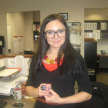Spinal Fusion and Other Surgical Treatments for Disc Herniation
A herniated disc affects roughly 10% of the population at some point in their lives. However, autopsy investigations demonstrate that the majority of people have a herniated disc but have never experienced any symptoms.

The pressure of bearing the body's weight leads the disc's outer covering to weaken, shrink, and develop microscopic tears over time. Simultaneously, the water content of the disc's core decreases as it becomes gradually drier.
These alterations render the disc vulnerable to herniation (protrusion), which occurs when the center of the disc bulges through the weakening outer layer due to minor trauma such as lifting an object or simply sneezing.
When a bulging disc presses on one or more of the spinal nerves that emerge from the spinal column, symptoms develop. The disc can push on the spinal cord or the cauda equina in some persons. This produces discomfort in the back as well as the body portion serviced by the compressed and irritated nerve.
Disc fragments may break away in some situations, a process known as sequestration. Although any disc can herniate, the two lowest discs, which bear the most weight, account for 90 to 95 percent of cases.
When a disc herniates, the location and intensity of the symptoms are determined by the position and extent of the rupture. A herniated lumbar disc, for example, can cause discomfort, numbness, or weakness in one leg (sciatica). Similar symptoms in one arm or hand may be caused by a herniated cervical disc (less commonly on both sides).
Herniated disc pain usually comes on suddenly. Before the agony starts, the sufferer may "feel something break." Before becoming more severe, the discomfort may begin as a moderate tingling or "pins and needles" sensation.
When a herniated disc compresses a lumbar nerve root, pain spreads down one leg. Increased pain, numbness, and weakness in one leg, as well as alterations in reflexes, may accompany a decrease in back pain.
In reality, the most common cause of sciatica is a herniated lumbar disc. Pain may radiate down the arms and be accompanied by weakness and numbness in the arms and hands if a ruptured disc compresses nerves in the neck.
In those who have impaired bowel or bladder function, persistent or growing sciatica, progressive limb weakness, and frequent episodes of incapacitating sciatica pain, surgery for a herniated disc may be unavoidable.
Discectomy
Open discectomy, the classic surgical treatment for a herniated disc, is utilized in two situations: when nonsurgical treatment has failed for at least six weeks or when there is a "neurological deficit," or an issue that causes nerve dysfunction.
By cutting through the inflated annulus fibrosus (the tough outer layers of the disc) and removing the projecting nucleus pulposus, the surgeon releases pressure on the pinched nerve (the gel-like center). It is necessary to use general anesthesia. To gain access to the herniation location, the surgeon routinely removes a tiny portion of the vertebra (laminotomy).
Diskectomy, on average, produces faster results than conservative treatment. The long-term outcomes of surgery and non-surgical treatment, however, are nearly identical. Your performance throughout the first three months of conservative treatment may influence your decision to have surgery. You might be able to go without it if your discomfort is manageable. However, if the discomfort is unbearable, surgery may be a better alternative because it can significantly alleviate the pain.
Microdiscectomy
Before removing herniated disc material, the surgeon examines the disc and nerves with an operating microscope. The success rate of microdiscectomy appears to be comparable to that of open discectomy. Doctors may prescribe this operation to patients who have been suffering from leg discomfort for at least six weeks and have not found relief from conservative treatments such as oral corticosteroids, nonsteroidal anti-inflammatory medications (NSAIDs), or physical therapy.
Spinal fusion
A spinal fusion may be performed in conjunction with a discectomy in some situations. The use of spinal instrumentation and bone graft to fuse together two or more neighboring vertebrae is known as spinal fusion. This treatment isn't always reliable, and there aren't as clear recommendations for when it should be done as there are for discectomy.
A person with persistent back pain who is having leg pain due to a herniated disc may benefit from it. When a second procedure is required because the first one was ineffective in reducing pain or the herniation recurred, spinal fusion may be advised. Spinal fusion, unfortunately, modifies the way the spine moves and may also induce degenerative changes.
Artificial discs
Despite the fact that artificial discs have been accessible in Europe for more than 20 years, the FDA did not allow their usage in the United States until 2004. After clinical trials showed that the device preserved motion and was as effective as spinal fusion in relieving pain, with shorter healing and rehabilitation times, the Charité, the first artificial disc available in this country, was approved for use in single-level disk problems (where only one disc is affected). The FDA authorized the ProDisc-L, a second artificial spinal disk, in 2006.
Candidates for disc surgery should have degeneration in only one lumbar disc and little or no arthritis in the corresponding facet joints; have tried at least six months of conservative treatment, such as pain medication or physical therapy, with no improvement in symptoms; not have significant leg pain; and be in good health overall.
About the Creator
Amelia Grant
I am journalist, and blogger.






Comments
There are no comments for this story
Be the first to respond and start the conversation.